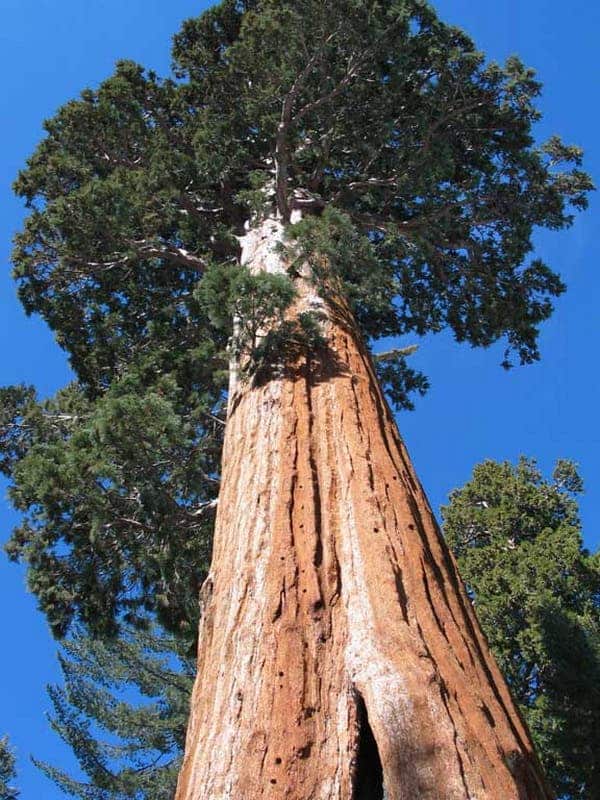
Obviously there has to be a limit to how much to a tree can grow, but what exactly influences and in term limits the height of a tree? For a long time researchers have noticed that the taller the tree, the shorter its leaves. Recently, a team of scientists found that there has to be a balance between tree height and leaf size – past this point the tree lives inefficiently and thus its growth is halted.
Kaare Jensen of Harvard University and Maciej Zwieniecki of the University of California, Davis, compared features and data from 1925 tree species, including of course the tallest, with leaves ranging from a few millimetres to over 1 metre long. According to their findings, leaf size varied most in short trees.
A bit of background on why leaf size and tree height are related, first. Plants have a circulatory system through which nutrients, metabolic compounds and waste travel. Plants produce sugar in their leaves, which then gets diffused through the leaf’s network of tube-shaped cells called the phloem. When sugar circulates it gathers momentum, so the more room it has to move the higher its velocity through the stream and the faster it will reach the rest of the plant. Phloem can be found in stems, branches and tree trunks as well, only here they act as bottlenecks. So, there comes a point where if the leaves get any bigger then it would be a waste of energy.
It’s because of this limit that trees reach a height limit. Typically, tall trees reach their limit when the leaves are still small, since the sugar needs to pass through so much trunk to feed the roots. Jensen elaborated some mathematical equations and found there’s a sort of equilibrium point where unusually large or small leaves both cease to be viable. The range of leaf sizes narrows and at around 100 m tall, the upper limit matches the lower limit. If a tree passes this limit, then, according to the researchers’ predictions at least, the leaf ceases to become viable anymore.
Today, the tallest tree discovered so far is the Hyperion located in Redwoods, California, which measures 115.61 m, has a diameter of 4.84 m, is between 700 and 800 years old and belongs to the Sequoia sempervirens species. As an interesting fact all of the top ten tallest trees in the world are in California, and four out of the top five trees are in Redwoods.
Findings were reported in the journal Physical Review Letters.



